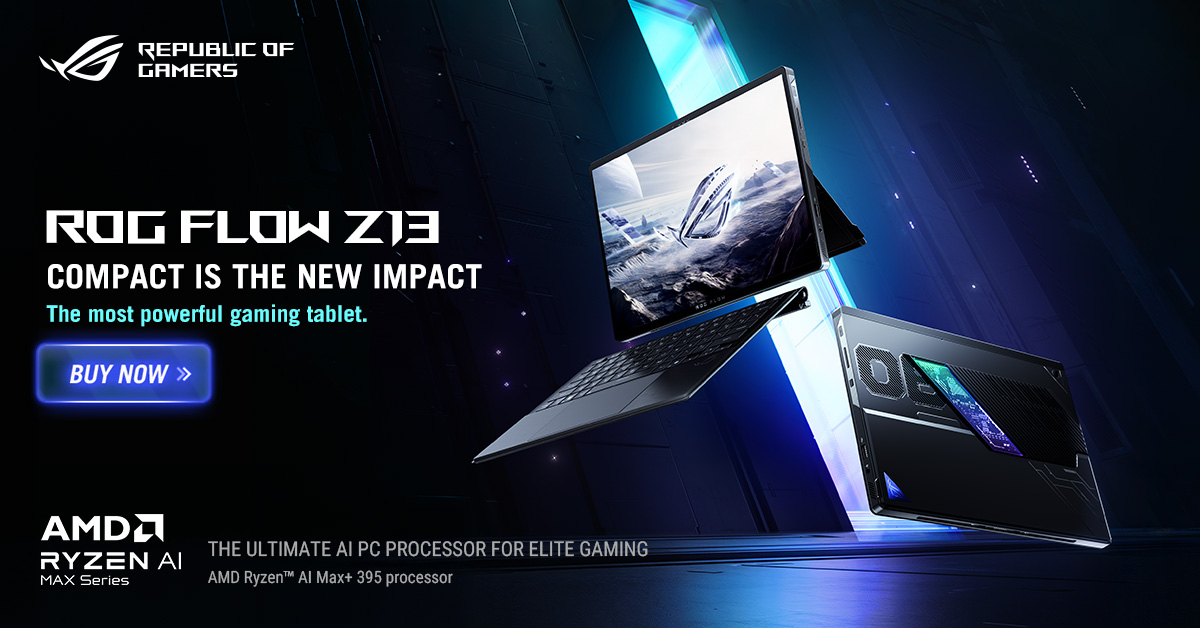Developed By: Kojima Productions
Published By: Sony Interactive Entertainment
Platforms: PlayStation 5
Reviewed On: PlayStation 5 Pro
Review Code Provided By: PlayStation Asia
I’ve never been a huge Hideo Kojima fan. I liked the Metal Gear series, but it was never a must-play like others. When I first heard about Death Stranding, it felt intriguing, but I never thought that it was something that I was aching to play. Strangely enough, I ended up loving it. It’s just a guy delivering stuff again and again, but maybe the whole package of weirdness, simplicity, curiosity, and emotion worked for me. Not to mention how enamoured I was with the soundtrack that introduced me to Low Roar.
Thanks to PlayStation Asia and PR partners, we were granted an early review code for Death Stranding 2: On the Beach (hereafter referred to as DS2). This time, I was very much excited to see what’s next in the mythos for Death Stranding and how the gameplay could be further evolved. When I first booted up the game and experienced the intro that most people have probably seen at this point, I was thinking to myself, “yeah, this is gonna be a banger”. Strangely enough, while I do think I enjoyed it overall, I did have some issues with the story that bothered me more than I thought they would. At the end of the day, it might just be a personal nitpick, but it’s just something I’d like to share.

Fragile Things
As I mentioned earlier, I was almost immediately blown away by the intro section in DS2. Graphically, it is one of the best-looking games of this generation as the Decima Engine works its magic again. The last time I was this impressed with the image quality and fidelity in this current generation was Horizon Forbidden West. There are two graphical modes even on the PS5 Pro (Quality and Performance), and both perform excellently across the board. At the time of this review, I don’t think it has been revealed yet the enhancements afforded to the PS5 PRO, including if it utilises PSSR, but the image quality in both the Quality and Performance modes is incredibly clean and sharp. The only noticeable difference between both modes is that Quality is running at 30fps and Performance at 60fps. I played through most of the game in Performance mode and did not encounter any graphical anomalies or performance dips. DS2 is a highly polished experience graphically.
Sound design is generally great as well, except for just a few unexpected omissions and oversight, mostly regarding atmospheric immersion levels, if I could call it that, but let’s talk about the positives first. Dialogue between characters is clear, sound effects of vehicles and weapons are generally great with a comfortable rumbly and punchy feeling over multiple terrain or battle instances. Anyone who played the first Death Stranding remembers the amazing, licensed tracks that accompanied your journey during deliveries. I’m glad to share that it returns here with what I feel is an expanded track list into different genres as well.
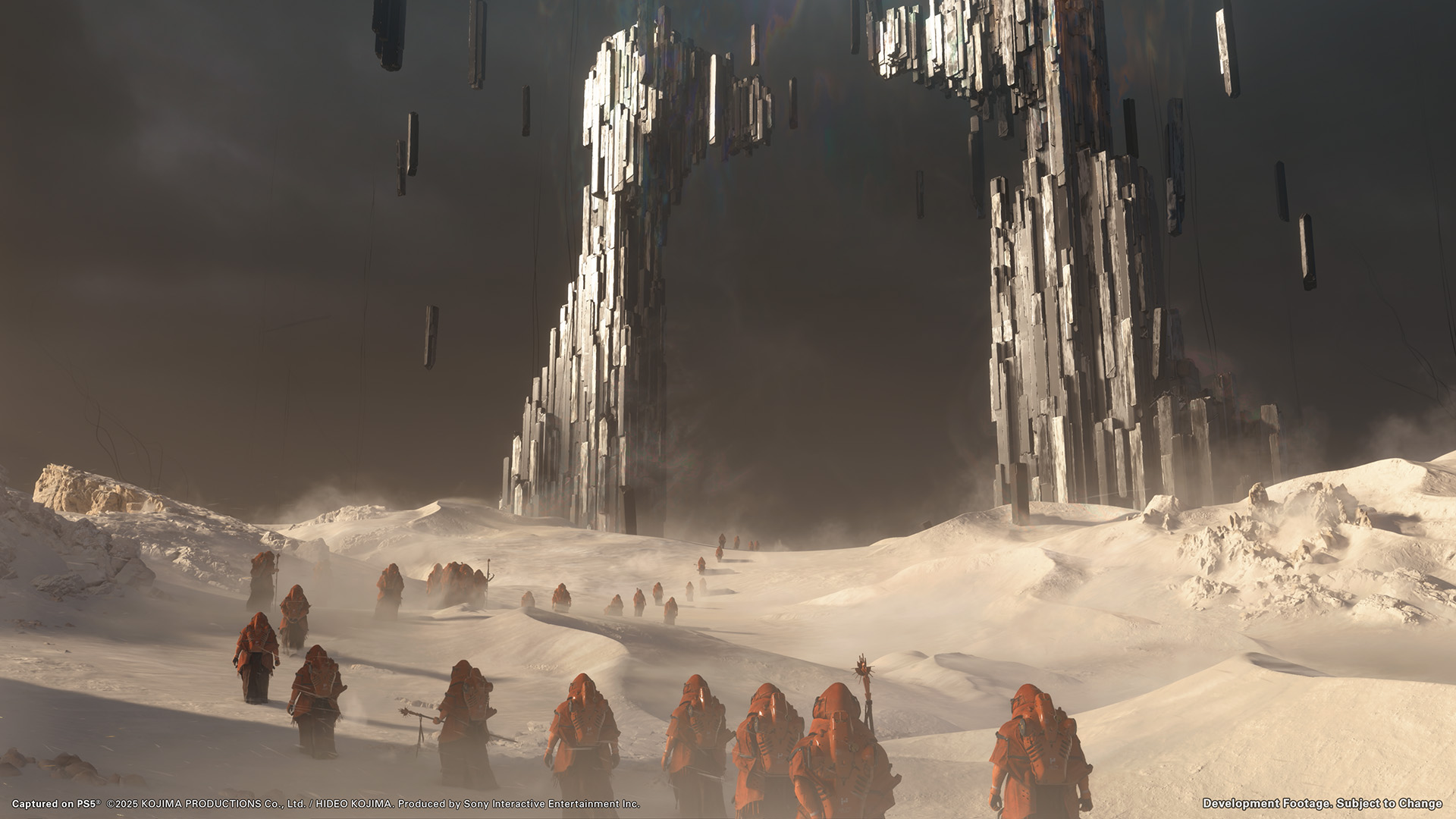
It’s interesting how George Miller’s likeness has a cameo as Tarman, and DS2 is set in Australia (obviously Hideo Kojima is a big fan of the Mad Max movies), but for example, when a sandstorm hits, I expected it to be ferocious, thunderous and terrifying. It was just okay. What else took me out a little is how the first Death Stranding had an almost impeccable licensed track list, but here, with the inclusion of more types of music, it doesn’t all fit as well as it should. Don’t get me wrong, I don’t think they are bad choices, more like just curious ones, even considering the weirder tracks included, which I enjoyed. Some orchestral tracks are great as well, but none that matched that otherworldly theme from the first game, which almost perfectly set the tone for the rest of the game in this weird and mysterious world Hideo Kojima has created. However, there was somewhat of a weird bug maybe or just a timing issue on the licensed tracks that play during deliveries as I found the further along, I was in the game the more off the timing was when they would come on. Most of the time, they would start playing literally when I was almost reaching the destination, and I can recall twice where the title cards for the tracks would show, and the songs just never played.
When it comes to the performance and immersion for the PS5, I experienced zero crashes, barely any loading between fast-travelling. Haptics and Adaptive triggers are just on the fine level, where it’s not bad but also not fantastically immersive. The Dualsense speakers are also utilised quite prominently to a satisfying degree. All in all, it’s a solid, good effort that adds to the entire playing experience.
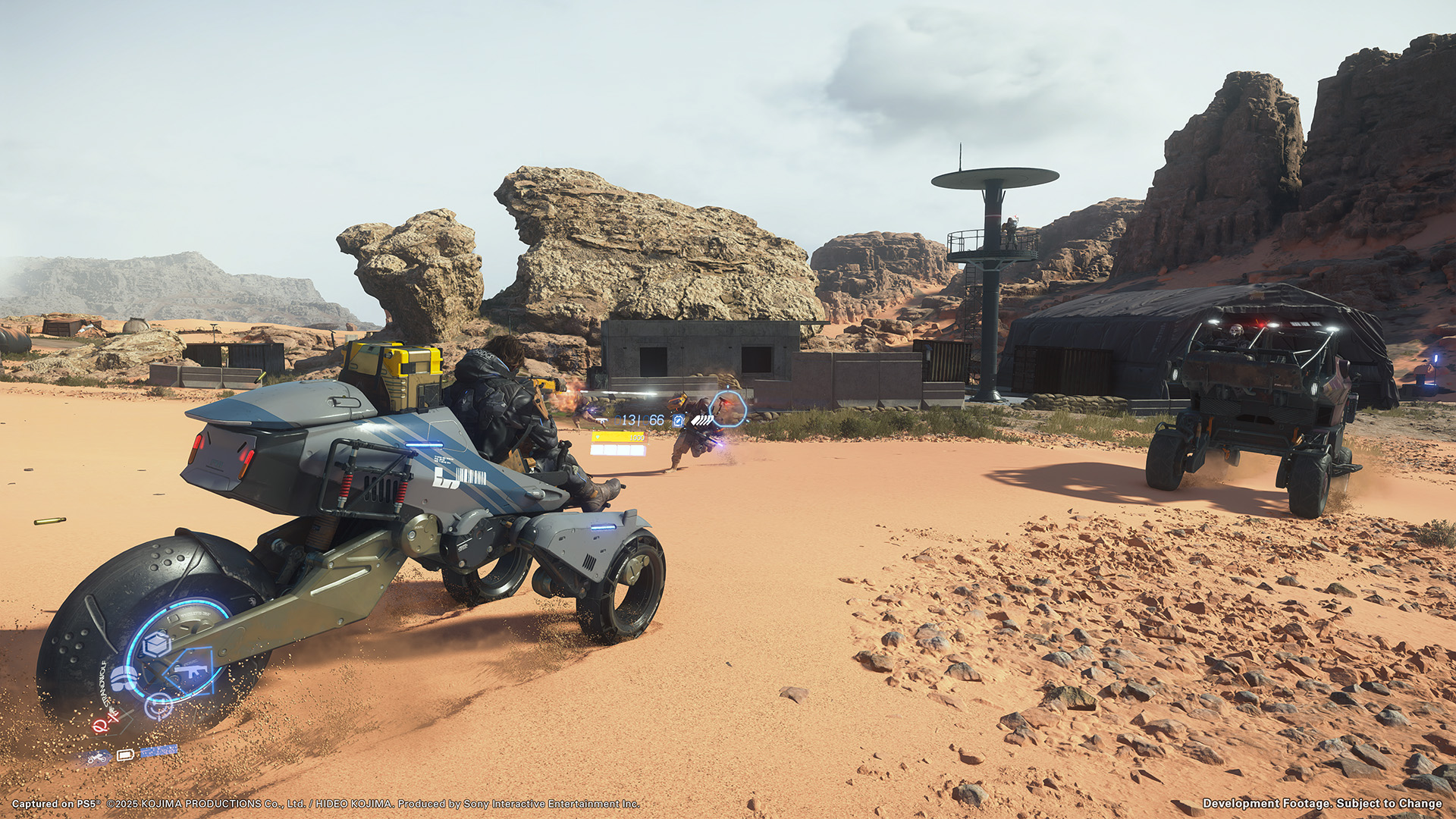
Amekara Nijie
The familiar Death Stranding delivery experience is back, but in my opinion, it has made some significant strides in refining the system to give the player more options and to provide a much less frustrating journey. The opening section of the game is set in Mexico, which serves as a sort of tutorial area for new and returning players to familiarise themselves with the delivery and combat options available. I know most players were worried if the developers leaned much more into action in DS2, but honestly, it didn’t feel that way so much for me. You still need to deliver stuff from point A to B, there are still enemy camps along the way, there are still BT-infested areas along the way, and the familiar boss battles in the main story.
There are still two vehicle types (the Trike and Off-Roader Truck) with the same dilemma presented: speed vs volume. The change is that instead of different variants of them, players can customise and upgrade the vehicles with more battery life, armour, or gravity boosters for those landings after using a jump ramp. I wish there were another vehicle type somewhat in the middle of the trike and truck, but it is what it is. There is a brand-new mode of transportation, which is the monorail. Players can load cargo, their vehicle and ride on it themselves. As convenient as it is for some reason, you cannot skip ahead, so if the estimated ride takes 4-7 minutes, you will just be staring at the screen for that duration. There is another mode of transportation which confused me slightly more. It is a teleporting transponder where players can beach jump from facilities that have the transponders or to a built one in the wild. What kind of sucks is how you cannot bring cargo with you. It would have been perfectly acceptable if you could only bring along cargo you could carry, but nope, you can’t. You can only teleport Sam and his wearables.
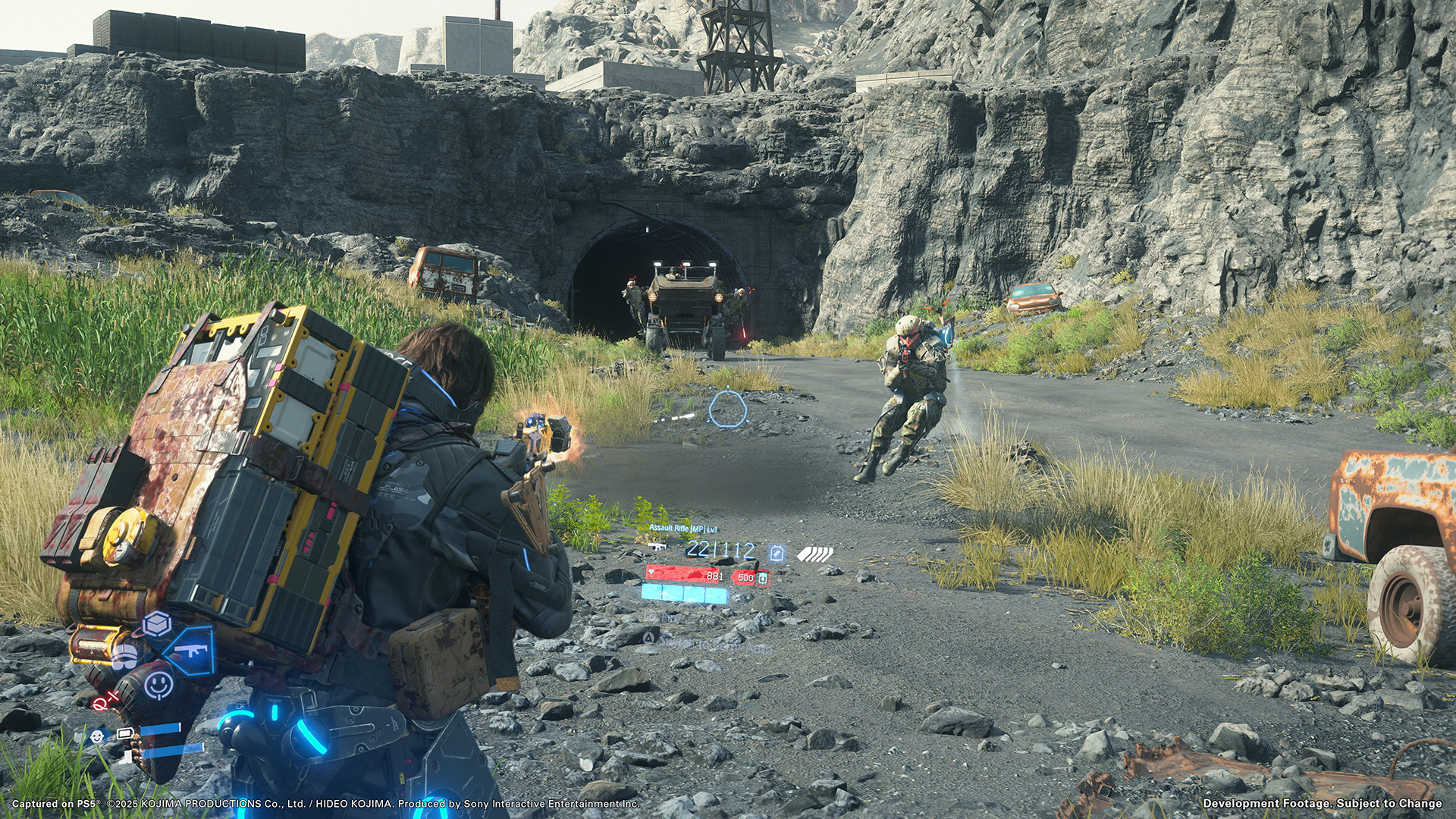
Combat is improved by the wealth of options provided, but it’s also kind of a sidestep. You have your assault rifles, shotguns, sniper rifles, handguns joined by new options like electrified gloves, mine dogs, electric traps, even a throwable pizza dough (if you want to get weird) but it can quickly feel like a lot due to how there is level variants (lvl1/lvl2) then silent level variants which quickly feel like clutter. I found it to be a bit strange how they try to kind of declutter the vehicle options with customisation, but they could have easily applied the same to weapon types. The reason why it’s slightly jarring for me is that the issue is always space. You give more, but it also takes up more and even when you have your personal preference, it can feel unbalanced due to some encounters requiring better firepower. Also, I don’t know if it’s just me, but why do machine guns seem to do more damage than grenades?
On the normal difficulty, the challenge is just nice for me. It never felt overly easy, but also not too frustrating. The only frustration comes from the new boss battles, which I can’t say I’m a fan of. I weirdly always prefer BT battles compared to the new Mech types in DS2. The reason why is I get that at times it’s just point and shoot, but with the Mech types requiring aiming for specific points to do more damage and trying to get a right angle feels like a chore, especially if you don’t have the right weapon. Sam also needs to be way more agile when dealing with mech types, and a lot of the time, it’s painfully obvious. I can beat them, but it just felt like something was missing from those encounters.
What feels immediately better for me is that DS2 is set in Australia, compared to the end-to-end map exploration in the first game; here, each area is designed with its biome in mind and comes full circle by the end of the game. Sure, you might get some bullshit quest that requires you to go halfway around the map for a reason that’s flimsy but at least its super rare. The new environmental challenges added to the map (like floods or rockslides) sounded great on paper, but in all honesty, I felt very underwhelmed. I rarely encountered a rockslide, and if there was a flood, it elicited more of a that’s neat response rather than providing a puzzle to solve.
To sum it up, there are a lot of good improvements but also a few curious ones. I haven’t shared more of them to discover in DS2, but there are a lot of amazing surprises worth experiencing fresh.

Minus 61
Death Stranding 2 is set eleven months after the first game, where Sam and Lou have left Bridges and disappeared to Mexico. Sam joins up with Fragile to once again link up Mexico and Australia, as now with the existence of Plate Gates, linking and travelling between continents is possible. Old enemies like Higgs and new BTs have appeared. Sam and the Drawbridge crew above the DHV Magellan have to navigate the perilous Australian landscape and finish their mission. Apart from returning characters Sam, Fragile, Deadman, Heartman and Higgs, the crew is joined by new faces Tarman, Rainy & Tomorrow. Mirroring the flashbacks players experienced in the first game with Mads Mikkelsen’s character, this time we get Luca Marinelli together with his real-life spouse Alissa Jung playing Lucy.
As a whole, I do think the main story in DS2 is good, but it is also complicated. My issues with DS2 are how it starts strong, ends fantastically emotional as well, but everything in the middle is a mixed bag. I like weird shit. The weirder it is, the better, especially if the mystery and the journey accompanying it are incredibly satisfying, even if you don’t get all the answers. The first game had a lot of weird stuff, but the “twist” towards the end was a great one, as it was hidden incredibly well. It could be confusing, but it paid off satisfyingly for me.
I could tell early on where they were going with the story in DS2, but certain parts of it and certain performances in some scenes come off weird in a cringey way instead of weird in an interesting, makes-you-curious way. Almost all the story beats (save maybe for one, which can be debatable) are telegraphed so early but pay off so late that it left me sitting with something so certain for just way too long. I know this might be my problem, but it’s hard to speak more about it without going into spoilers. If you are interested in keeping yourself unspoiled, then please skip until after the spoiler tags. The rest of you? Here we go:
START OF STORY SPOILERS

After starting so well, the first issue I had with DS2 happened at the end of the Mexico section, where it is revealed that Deadman is well… dead. It’s not that his being dead is a problem; it’s how the scene unfolds that feels a bit jarring. Sam is met by a recording of Deadman that reveals that he actually is already dead but that isn’t even revealed in a “oh-no” kind of way but kind of cringey due to it being almost comical how there is footage of Deadman just kind of waddling into the sea on a Beach (I know it’s confusing so let me briefly explain that a Beach is kind of like dead people cloud and it looks like an actual Beach for those who are unfamiliar). And it’s because of how it is presented, you instantly know that Deadman is coming back later in the game.
The second issue I had was not against Tomorrow as a character, but just a single fact about her. See, Lou dies in Mexico, and not long after, the crew will find Tomorrow. It’s another sequence of events which reveals to you that Tomorrow is Lou, but the game only acknowledges this fact right at the very end. I sat with this so long during the main story that when the reveal finally came along, it did not impact me at all. It’s kind of like they were banking on no one figuring out Tomorrow is Lou and the only thing they tried to do was sort of plant doubts, which ended up being the third issue I had, which is the affair between Luca Marinelli’s character, Neil Vana and Lucy.
The first game had a brilliant twist where the player thought they were seeing visions from BB, but it turns out it was Sam’s memories of his father. It was very cleverly maintained as long as possible. Neil’s character only serves to have an affair with Lucy to sort of put the paternity of the baby she was pregnant with in doubt. He ends up as a sort of spectre with a mission in the afterlife due to a promise. The issue here is he plays the man on the mission part well; he doesn’t play the shattered man who had an affair with a woman who chose her husband in the end. Even the motivation for them having an affair is quite paper-thin. In my opinion, it made the affair weak and inadvertently made Sam look weak.
Higgs (played by Troy Baker) is electric (pun intended) every time he shows up. He truly is one of the best things in DS2; however, he basically repeats the same purpose from the first game. What’s kind of hilarious is that during the last sections of the game, there was a last-minute The Matrix Reloaded, Architect reveal and monologue for a mysterious third party, only to be almost immediately rendered irrelevant. It did come off that silly, and the focus was back on Higgs.
Perhaps the biggest misstep for me is Sam. I love Norman Reedus, and I love his portrayal of Sam. The biggest problem with Sam in DS2 is that when Lou dies in Mexico, he gets depressed for a hot minute, then joins Fragile on her journey. During the journey, he doesn’t feel like a parent who has lost their child. He’s just good old stoic and awkward Sam. They tried to explain it by Sam “imagining” that Lou turned back into BB and went back into the pod. I knew it was irrelevant because Sam has “luckily” levelled up, so he doesn’t need a BB to detect BTs. He just sees them now. It required a bit more nuance and emotion, which was kind of lacking. It’s also a huge missed opportunity how Sam and Tomorrow never circle each other more during the game, not knowing what both of them meant to each other, so the final reveal would have been so much more impactful.
There are more things I had issues with, but I thought it best to limit it to just these, which to me felt more than it needed to be.
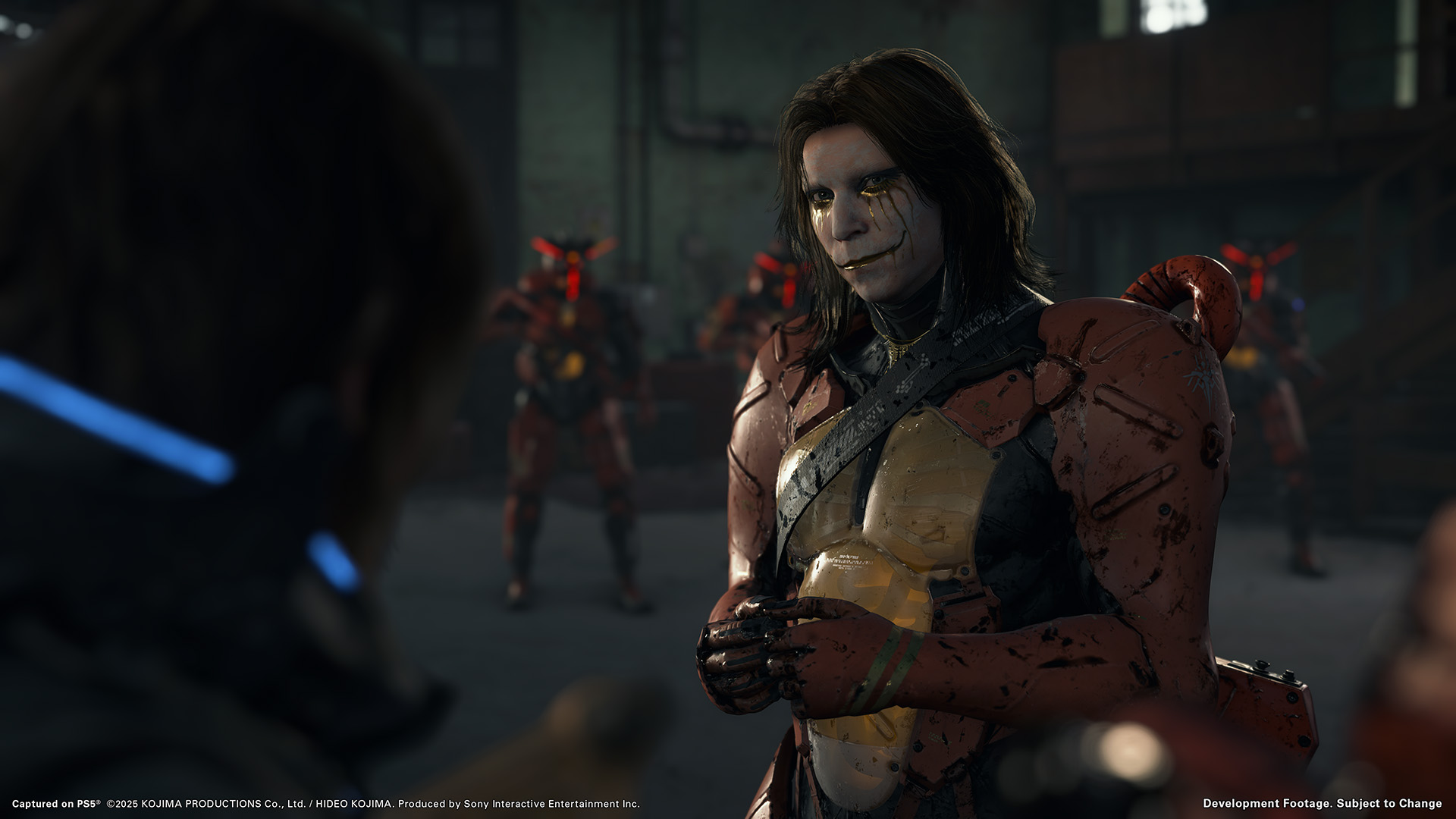
END OF STORY SPOILERS
There are a lot of elements that are not wrong from a story perspective; it’s the right story to tell. Don’t even get me started on how emotional I got at the end because it got to me. But it’s just the way it was framed and how it played out that felt a little less careful compared to the first game. Things that feel they should have more weight felt weightless. I know it seemed like I was ranting a lot about these things that didn’t work for me, but the reason why I feel so strongly about it is because of how it was on the cusp, and it really could have worked; it just didn’t.
If I had a piece of advice for players coming into DS2 is to try and advance the story as much as you can. I played through the game up to the 50% mark and found myself sadly disengaged, so I was, for a short while hate-playing it because things were happening very slowly story-wise. What can I say? I got caught up in deliveries. But once I focused more on the main story, it picked back up and ended on a very satisfying high.
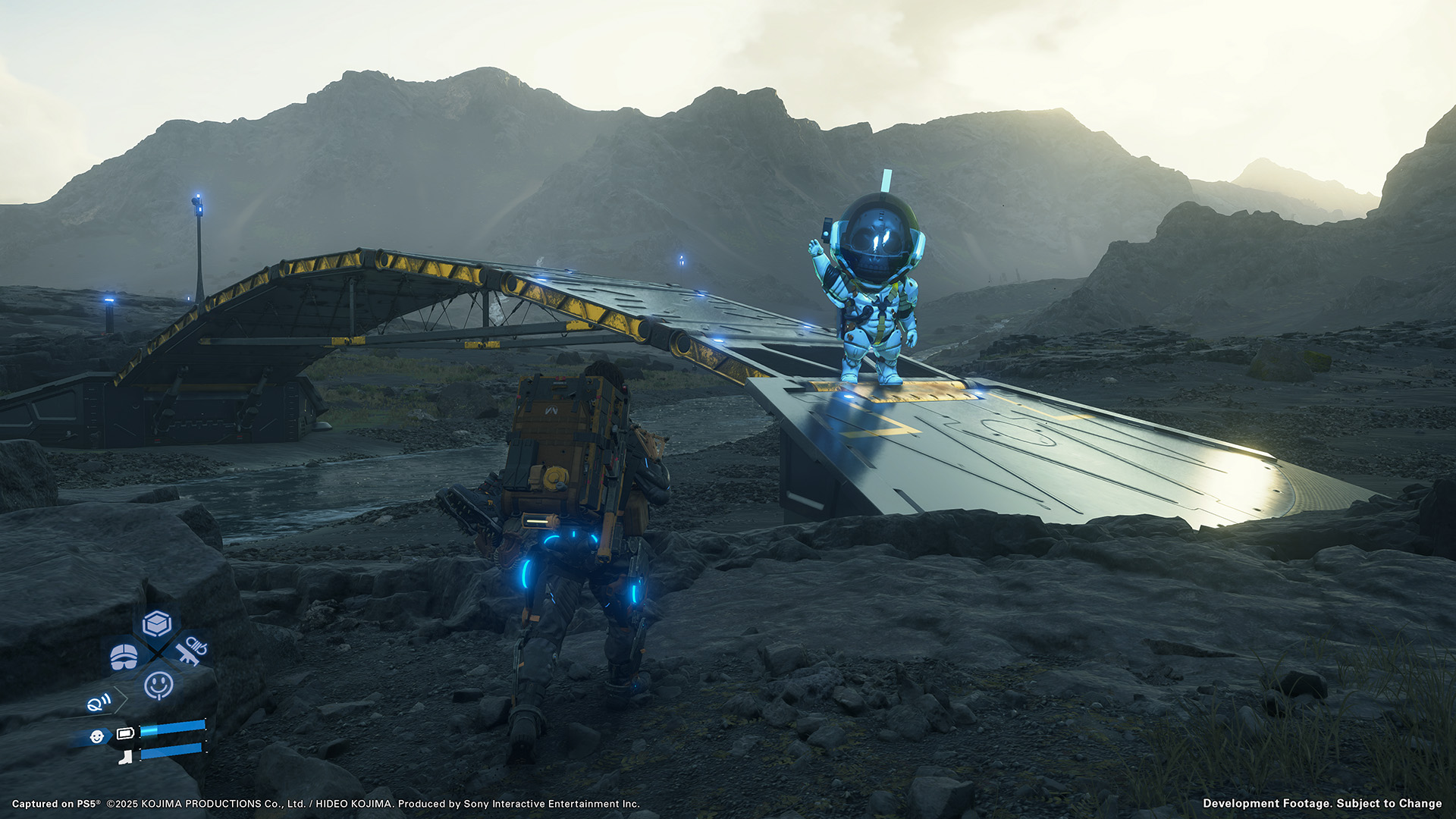
What I Really Liked About Death Stranding 2
- New Characters – The new characters were great, but apart from the semi-interesting backstory cutscene, they mostly just ended up doing cool things in cutscenes rather than bringing something new in-game. The clearest example of this is when a few of them must set out to find resources, so they left and reappeared, all of this just through a cutscene. It’s a weird, missed opportunity to show that they do exist outside of cutscenes. Still, I love the new additions.
- Graphics & Sound Design – The game looks amazing, and the soundtrack is good. Maybe more technical analysis might find some shortcomings with the image quality, but this is a really gorgeous-looking game.
- Depth & Game Length – The expanded weapons, customisation, and weapons are good. The game also didn’t feel like it overstayed, but it might feel weirdly slow paced if you don’t beeline for the main story.
- Social Strand System – They improved on how resources and packages are more localised to where you need them to be, compared to extended distances you might have to forage at.
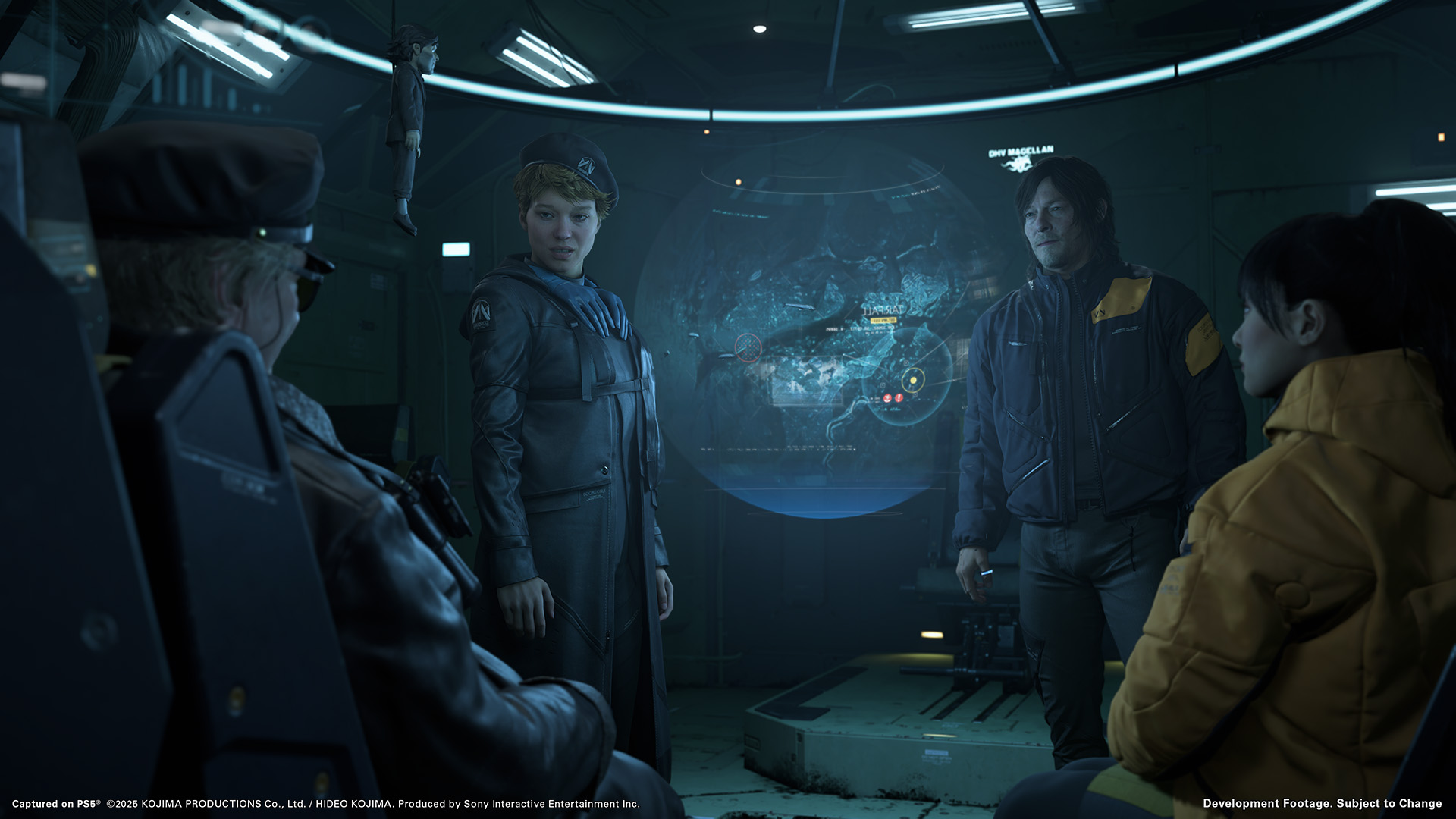
What Missed The Mark
- Framing of Story Sequences – Like I mentioned above, the story was the right one, but the problems for me lay in how it telegraphs the reveals too easily or does not display the required level of emotion in the performance. Unless you are the character called The Doctor. There was a scene where it made sense on paper, but she just wailed so suddenly and strongly that it felt more comical rather than sympathetic.
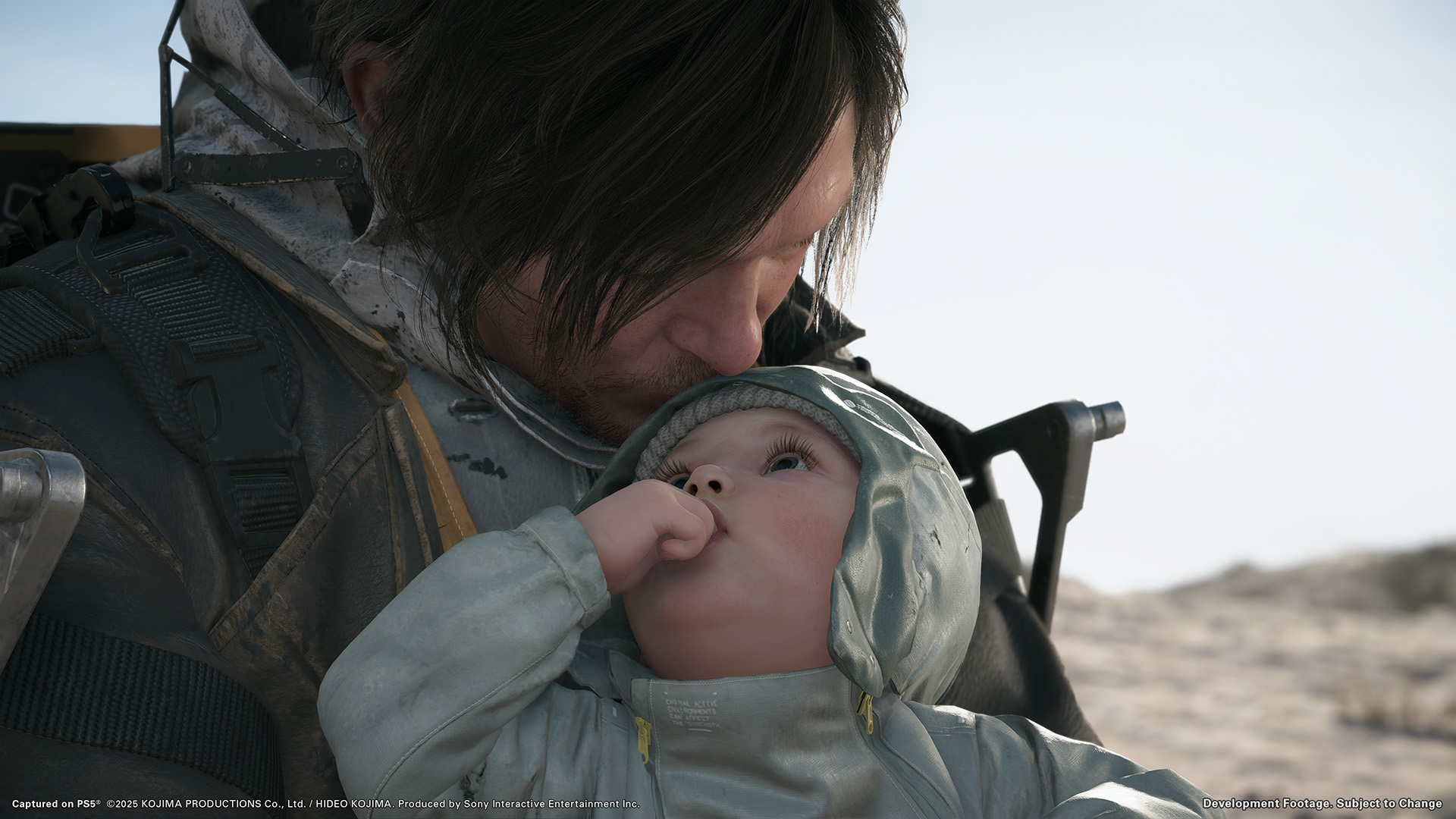
To The Wilder
Even with my issues with how the story played out in Death Stranding 2: On the Beach, I still immensely enjoyed the journey. I am working towards getting the platinum slowly because I do enjoy the somewhat zen-like quality that deliveries can provide. It is a worthy sequel that really should have made a bigger splash, but it is still a great game. I sat on writing this review after finishing the game just to sort of process my feelings on it. It is weird how long ago I played the first Death Stranding. Here is to hoping we won’t have to wait long for the next one.

